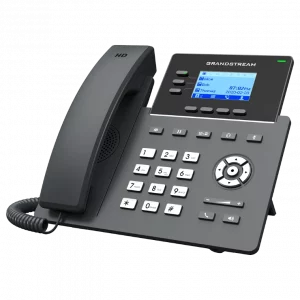
6 Steps to a Successful SIP Trunking Deployment
 Most businesses that choose SIP trunking for their communications needs, do so because of the significant cost savings over traditional PRI lines and long distance contracts. Many find additional benefits, such as simple implementation, on-demand maintenance and flexible subscription terms. If you are considering SIP for your business, there are a few simple, yet important things you should do before flipping the switch.
Most businesses that choose SIP trunking for their communications needs, do so because of the significant cost savings over traditional PRI lines and long distance contracts. Many find additional benefits, such as simple implementation, on-demand maintenance and flexible subscription terms. If you are considering SIP for your business, there are a few simple, yet important things you should do before flipping the switch.
Step 1 – Make Sure Your PBX is SIP Enabled
If you’ve purchased your PBX in the last 5 years or so, there’s a good chance that it is ready for SIP. To verify, or if you have an older PBX, check to see if it has an Ethernet jack. If so, it is probably SIP enabled. The user manual should contain a section that describes how to configure a SIP trunk. If your PBX is not SIP enabled, you can still leverage SIP trunking. You’ll just require a device called an Analog Telephone Adapter (ATA), which will convert the SIP signal to analog. They are relatively inexpensive and easy to find.
Step 2 – Decide How Many Channels You Will Need
A SIP channel can handle one incoming or outgoing call at a time. SIP service is usually priced based on the number of channels the business needs. This will depend on the number of employees and the intensity of their telephone usage. In most companies, people are not always all on the phone at the same time, so one channel will often work for every three or four employees. However, if your business includes heavy phone users, that ratio might change. The most flexible SIP trunking providers make it easy to add or cancel channels on the fly, so you won’t be locked in, but it is wise to have a good estimate to start with.
Step 3 – Calculate Your Internet Bandwidth Requirements
SIP trunking relies on the internet to connect calls to the public telephone network, so you must have sufficient bandwidth for this voice traffic as well as your data traffic needs. In most cases, your business broadband connection such as cable, T1, DSL or Metro Ethernet will be just fine. (A past post in this blog explains in more detail how to verify the suitability of your internet connection.)
Step 4 – Enable Quality of Service
Quality of Service (QoS) is a router setting that gives precedence to voice traffic over data traffic. It ensures that internet activities which require a lot of bandwidth, such as streaming video or downloading large files won’t degrade the quality of your telephone calls. Most routers in use by businesses have QoS capabilities, but if yours doesn’t, consider upgrading to one that does.
Step 5 – Configure Your PBX
Configuring your PBX for your new SIP trunks is not difficult. Any reputable SIP service provider will supply you with specific instructions. It is also a good idea to pick a SIP service vendor with a good reputation for customer support, in case you need some assistance during the set up.
Step 6 – Conduct a Trial
We recommend selecting a SIP provider that offers a free trial so you can test the service with your internet connection and equipment. You’ll quickly get a feel for the audio quality, as well as the administration process.
Once you’ve completed these 6 steps, you can be sure that your business is ready to start saving money and reducing communication system management headaches. If you have questions about any of them, just drop us a line, we’re happy to help.


